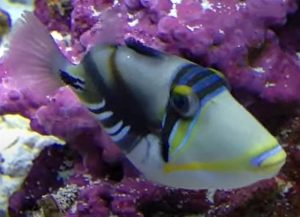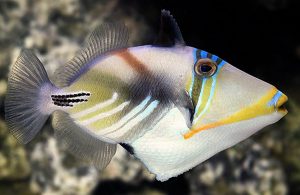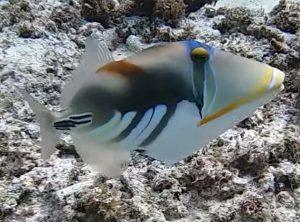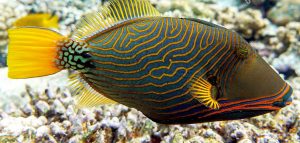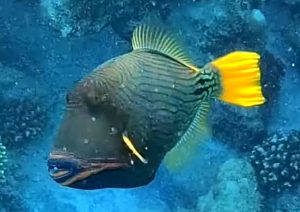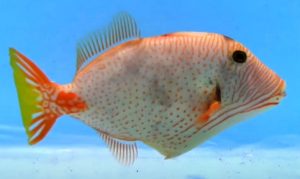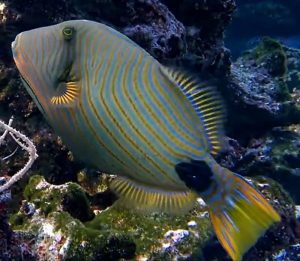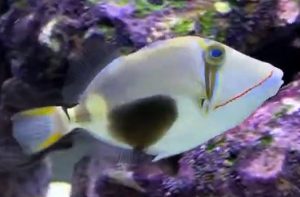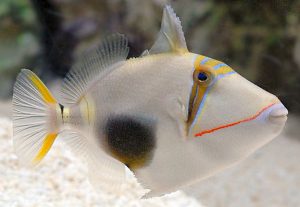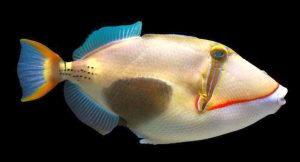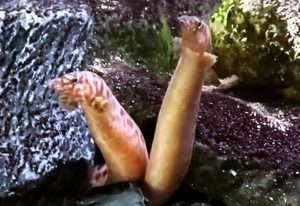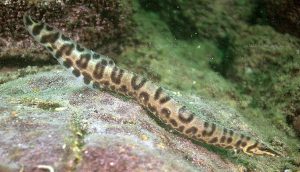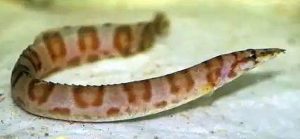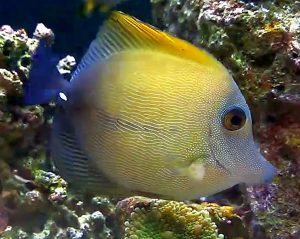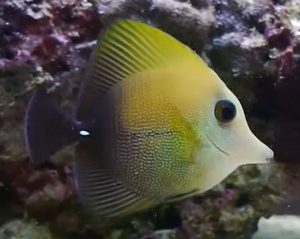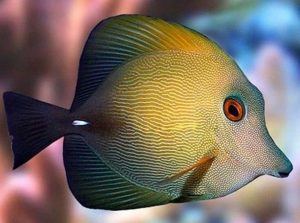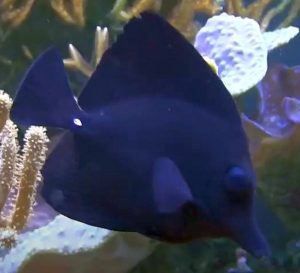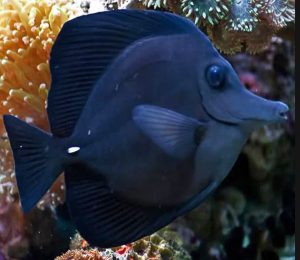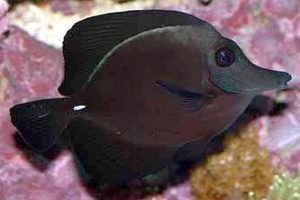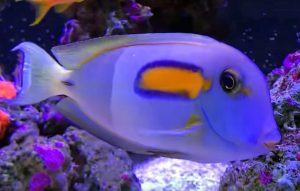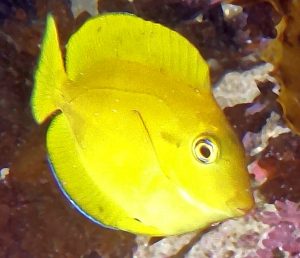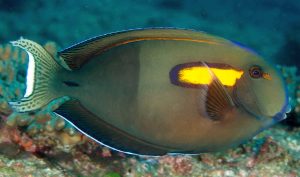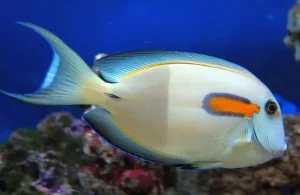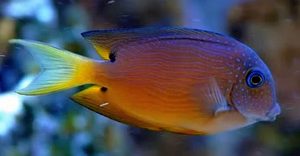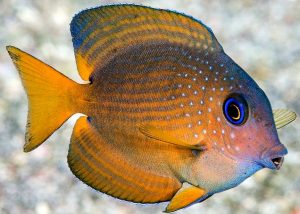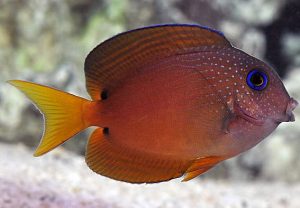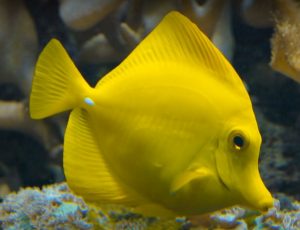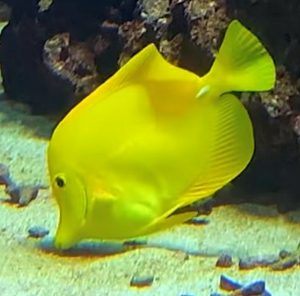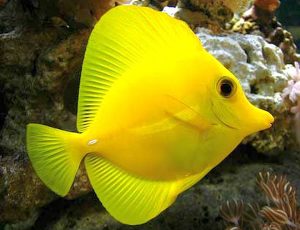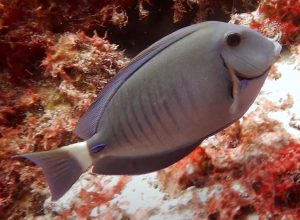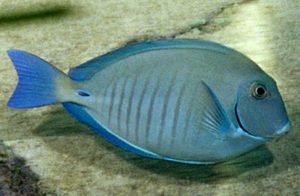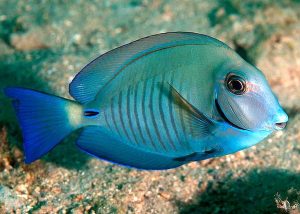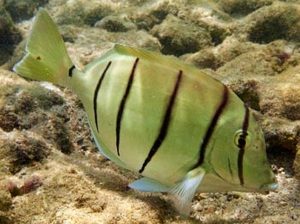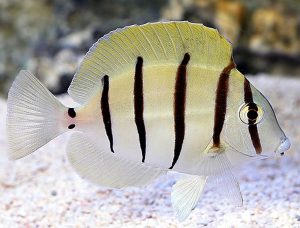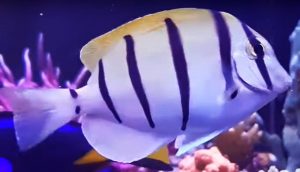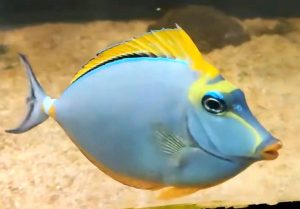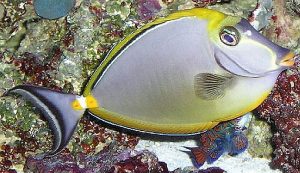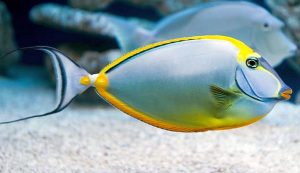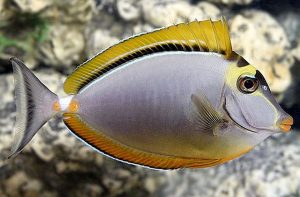Indian Trigger (Melichthys indicus) known to tropical fish keeping enthusiasts as Black Finned Triggerfish or Indian Black Triggerfish are found throughout the Indian Ocean. Its range extends from the Red Sea and East Africa, eastward to western Thailand and Sumatra, Indonesia, and the Great Barrier Reef in Australia. Indian triggerfish have never been found near Hawaii.
The Indian Trigger is a solitary species that is usually encountered alone in clear lagoons and along the coral rich seaward reef slopes of their range at depths to 100 feet where they have been observed feeding on algae, sponges, crustaceans, and invertebrates. Along the deep outer reef slopes, lone Indian Triggers are frequently seen as deep as 250 feet feeding on benthic invertebrates.
Juvenile Indian Triggers are often collected from corals and rocks that they shelter among. At night both adults and juveniles have been observed digging holes below the bases of corals and using their dorsal and anal fins to bury themselves with sand to hide from predators.
The Indian Trigger has an oval shaped dark brown, to bluish violet, to black colored body with pale blue, pink, or white stripes along the base of the dorsal and anal fins; white bands that begin at the eyes and extend over most of their face with an oblique blue stripe on the lower cheek, and a narrow white margin on the round caudal fin.
They closely resemble the Black Durgon or Hawaiian Black Triggerfish (Melichthys niger) that lack the white margin on the caudal fin.
The Indian Trigger can be housed in a mature reef or FOWLR tank of at least 150 gallon capacity with a sand or coralline substrate, plenty of live rock arranged into caves, crevices, and overhangs for them to hide among and a copious amount of free swimming space. The Melichthys niger can be kept with caution in reef systems without sponges, gastropods and crustaceans. They typically do not nip at corals and will generally ignore sessile invertebrates, but adults will eat any ornamental shrimp or snails they may come across.
Indian Triggers are known to be somewhat aggressive, especially towards smaller tank mates and those with similar body shapes. Ideally, only one Indian Trigger should be kept in a FOWLR tank, however, similar sized semi aggressive species and slightly smaller more aggressive species usually get along well with them. Avoid housing them with small docile species.
Like most triggerfish, Indian Triggers are voracious eaters that require a good filtration system, efficient protein skimming, and a wave maker to replicate the brisk water movement they require.
The Indian Trigger has never been successfully bred in an aquarium environment.
In their natural environment, Melichthys indicus display distinct pairing when spawning. The eggs and sperm are simultaneously released into the water column and broadcast onto the substrate. The parents are very aggressive over their eggs and apparently guard them until they hatch into larvae.
In their natural habitat, Indian Triggers feed on algae, sea weeds, hard shelled mollusks, echinoderms, small fish, zooplankton, and benthic invertebrates like sea urchins, sea worms and small crustaceans.
In an aquarium environment, they should be fed a varied diet of fresh or frozen Angelfish formulas, vitamin enriched brine shrimp, Spirulina enriched brine shrimp, Mysis, squid, chopped shrimp, mussels, small fish and some vegetable matter. Feeding small portions several times daily is recommended.
The Indian Trigger (Melichthys indicus) is occasionally available to tropical fish keeping enthusiasts from a variety of online suppliers and specialty fish shops at prices that vary according to size and area of collection.
Approximate purchase sizes vary from small specimen 1.0″ – 1.5″, up to large 7″ – 9″ adults with prices ranging from $79.99 to $695.99.
Minimum Tank Size: 150 gallons
Aquarium Type: FOLR
Care Level: Easy to Moderate
Temperament: Semi Aggressive
Aquarium Hardiness: Hardy
Water Conditions: Temp 72-82F, dKH 8 – 12°, pH 8.1-8.5, Salinity 1.022-1.026
Max size: 9.5″
Color Form: Black, Blue, White
Diet: Carnivore
Compatibility: Not reef safe
Origin: Indian Ocean, West Pacific
Family: Balistidae
Lifespan: Over 10 years
Aquarist Experience Level: Intermediate


































